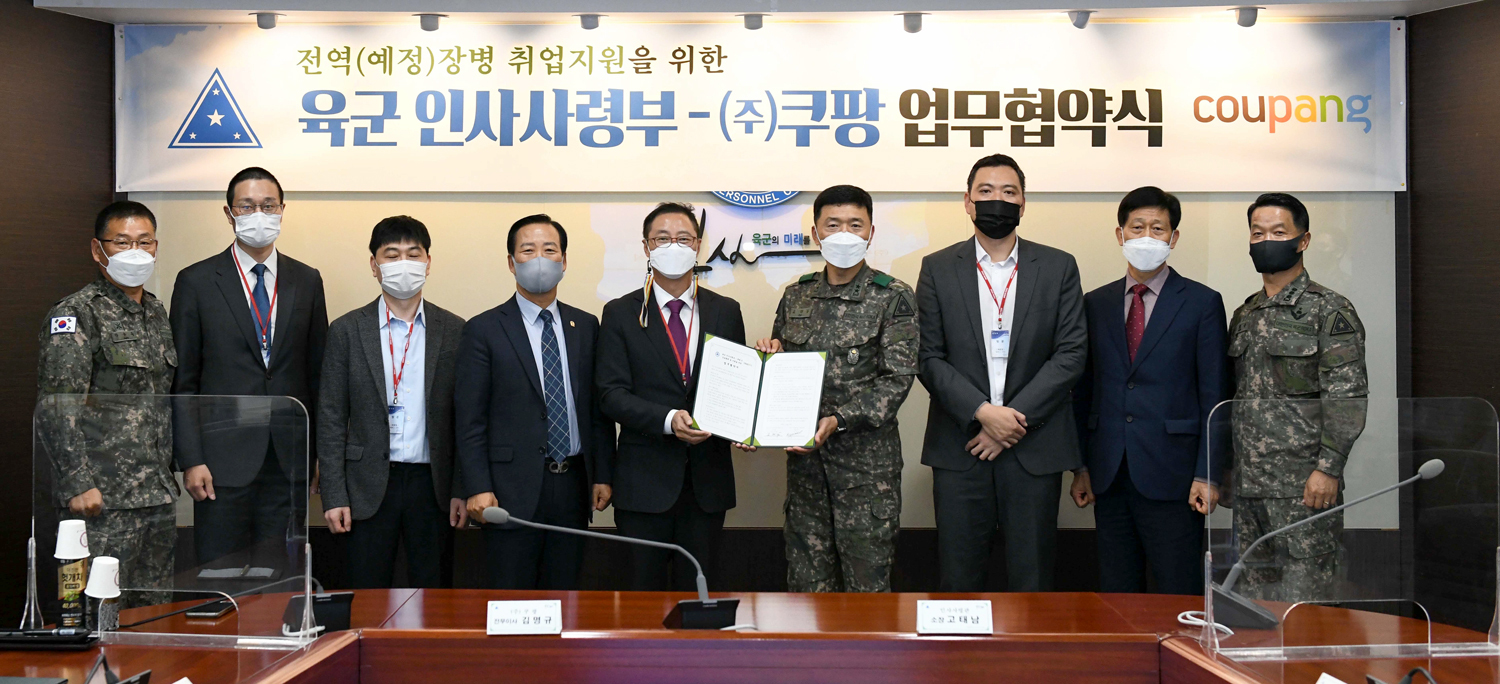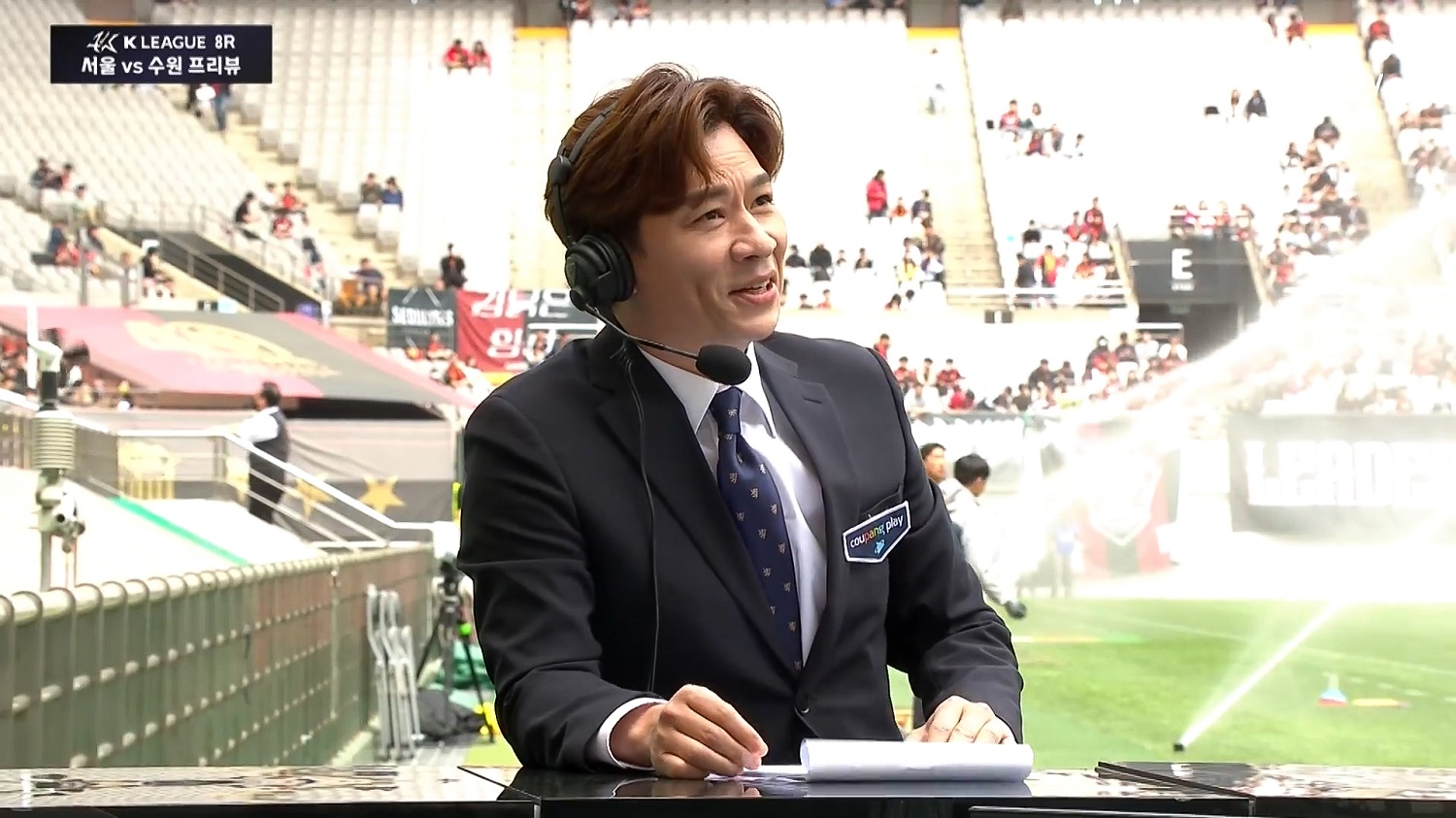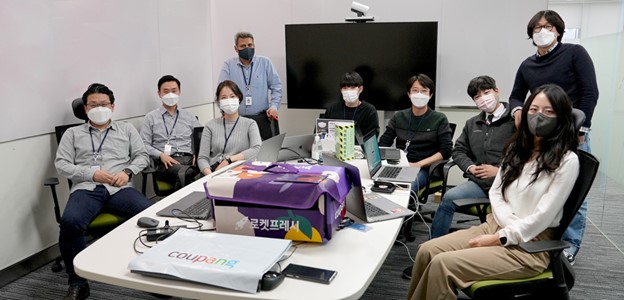
Any competent engineer can design a battery that lasts twice as long but is also twice as heavy. The true innovative challenge is creating a battery with twice the life at half the weight. Breaking such tradeoffs lies at the heart of our work ethic at Coupang, down to the very packaging used in our deliveries.
While packaging is traditionally used in e-commerce to protect deliveries, it generates a tremendous amount of waste—a report by Oceana, for example, found that there were nearly one billion kilograms of global e-commerce plastic packaging waste generated in 2019. At Coupang, we have a team dedicated to designing eco-friendly packaging materials and processes to combat such unsustainable practices, seeking solutions that are at once more protective and less wasteful. Meet the Packaging Team, who are helping build a sustainable commerce of the future.
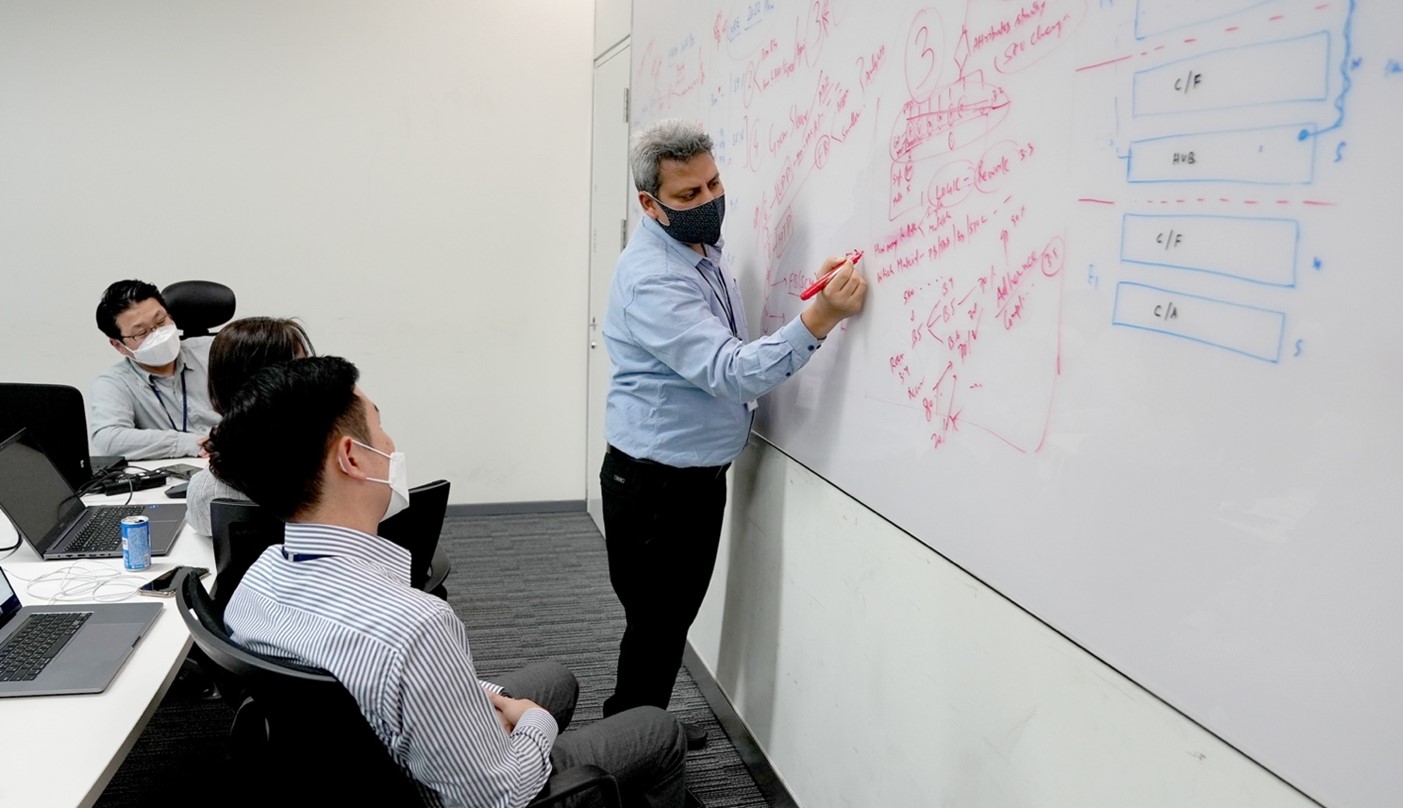
What kinds of changes have you made to Coupang’s packaging materials?
When shopping online, you typically get deliveries in cardboard boxes. At first, Coupang also shipped most products in box packaging. Today, however, less than 20% of all products are packaged in cardboard boxes.
Generally, online stores hire couriers to handle delivery, so they have no control over how the products are handled on the trip. This means they have no choice but to send products in thick boxes packed to the brim with cushioning materials. However, since Coupang handles delivery directly, we can ensure products are handled safely to the very last mile, eliminating the need for overpackaging. Instead, we’ve developed a process to ship products in thin plastic sleeves.
I saw a wall clock being packaged in thin plastic at the fulfillment center—aren’t you concerned it will break during delivery?
In the process we’ve developed, products are packaged in thin plastic sleeves, and then orders that will be shipped to the same area are placed in plastic bins. These bins are stacked next to each other in designated spaces inside of our Coupang Cars. Not only is this safe, but also because individual products are not packed in bulky boxes, more items can be loaded onto delivery trucks at one time. This helps reduce carbon emissions by reducing the amount of vehicle operation.
It’s interesting that changing the packaging material also affects vehicle operation. I heard that the plastic bags and paper boxes being used are getting thinner as well.
It’s related. Orders can be safely shipped even if they are lightly packaged. We calculated the minimum durability of packaging needed to protect the products, reduced the weight and ran tests, and then introduced it to actual delivery. We’ve reduced the thickness of our plastic packaging by nearly 10%, and the weight of our boxes by 12% to enable the optimum strength and temperature maintenance for products. These efforts are expected to save 669 tons of plastic and 1533 tons of cardboard boxes per year. They are also environmentally friendly and have the added benefits of saving costs.
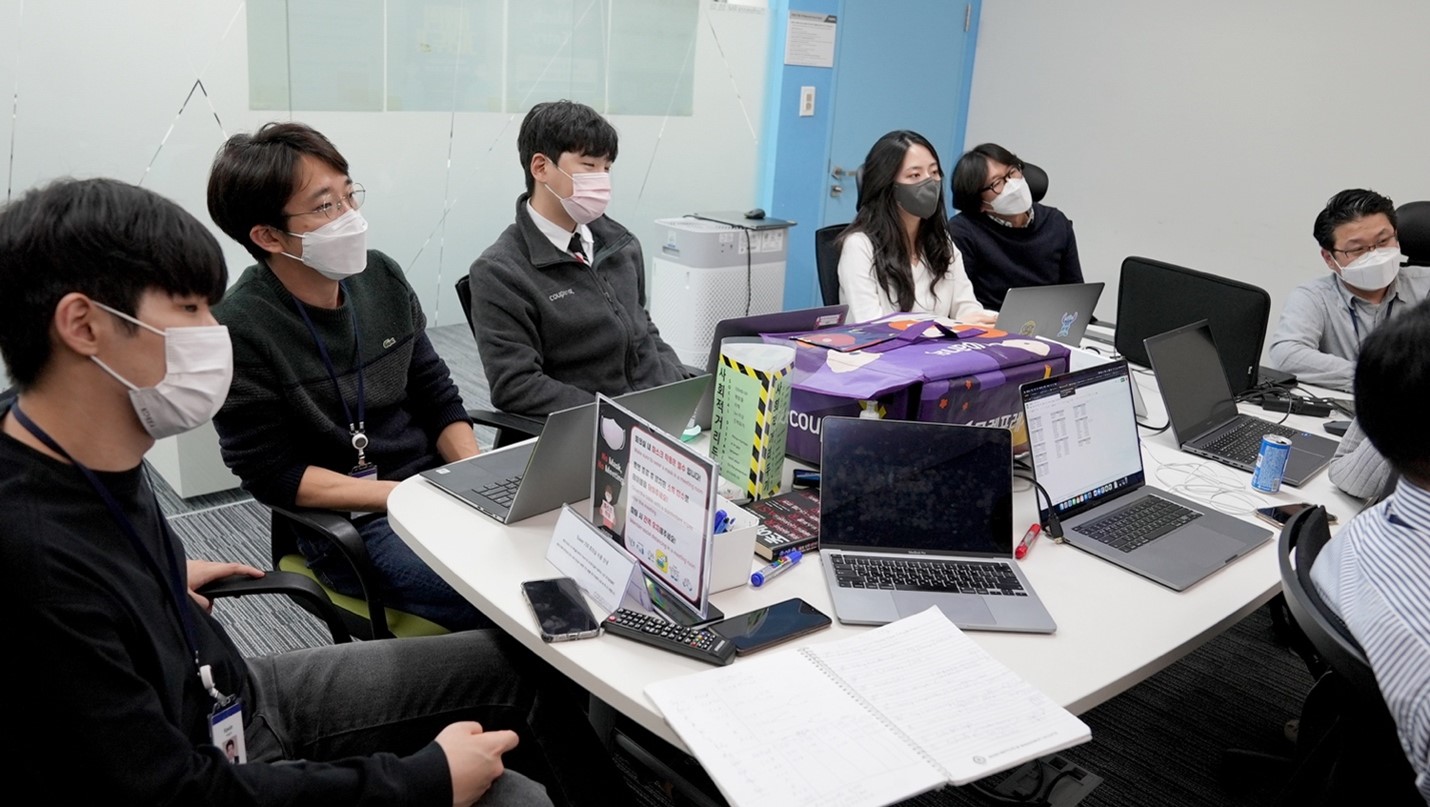
Are you saying that eco-friendly efforts are also helpful for business management?
Sustainability is the most important in eco-friendliness. The fact that our efforts to grow as a company are also better for the environment means that the two goals are not mutually exclusive. For example, we developed reusable cold storage bags called Fresh Bags for delivering fresh food. It wasn’t easy to develop an insulated bag, implement processes to store, clean, retrieve, and reuse them, and build the infrastructure around them. After all, Coupang has a huge amount of orders for fresh food each day, and the Fresh Bags are deployed nationwide. However, once this system is established, it helps to reduce costs. Because Fresh Bags can be reused over and over again, we were able to reduce the expenses of purchasing disposable cardboard or Styrofoam boxes that can only be used once before being discarded.
Reusable Fresh Bags have been really convenient to use, because after I receive my ordered products, I can leave the bags outside my door to be picked up by Coupang’s drivers on their next delivery. However, I can’t imagine it’s easy to operate such a system.
There’s always a process of building and improving upon ideas at the beginning. At Coupang, we’re not afraid to try new things. When we think something is a good idea, we test it on a small scale first and improve it until we can roll it out nationwide.
Introducing Fresh Bags was a different process from developing general packaging materials. Usually, our role with packaging ends once we’ve shipped it out, but with Fresh Bags, we had to recollect them. They need to be thoroughly cleaned to be reused, and then brought back to be repackaged. This would be very difficult unless you were at Coupang, which directly operates its logistics centers and delivery infrastructure. Since Coupang is already doing last-mile delivery, building a system to collect and reuse Fresh Bags wasn’t as complicated as you would expect. Our long-term goal is to increase the delivery rate of fresh foods in Fresh Bags from 70% to 80%.

Still, I imagine you can’t completely eliminate single-use packaging in deliveries. Are there any measures for this?
As I mentioned, we are continuously trying to reduce the amount of waste generated by reducing the weight of packaging materials, and we are already seeing results. We are also testing different materials so that we can use less plastic in our packaging.
The key to eco-friendliness lies in resource circulation. Reusing or recycling resources multiple times can reduce waste and reduce carbon emissions from manufacturing. While we are focusing on the reuse aspect with our Fresh Bags,
Our ultimate goal is to collect and recycle not only plastic waste generated from our logistics centers, but also the packaging and cushioning materials delivered to customers. Although it is impossible to completely eliminate single-use packaging, if we can continue these resource recycling practices, I believe this will lead to great results for both the environment and our business.
Reuse and recycling are not easy challenges.
They’re not easy because the process doesn’t end at delivery; the packaging resources have to be circulated over and over again. However, taking on this challenge is possible because Coupang manages the entire logistics and delivery process end-to-end, from the moment an order is placed to the moment it’s delivered to the customer’s doorstep.
In the long term, I believe the entire e-commerce industry will shift towards this trend of resource circulation. And I think Coupang’s role in leading innovations in recycling and reuse such as Fresh Bags will grow even greater. The role of the Packaging Team is more important than ever, so our sense of mission is great.







